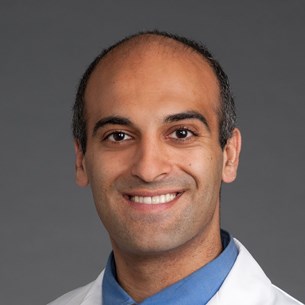Meeting
2017 ASCO Annual Meeting

University of Texas Southwestern Medical Center, Dallas, TX
Bernard Tawfik , David E. Gerber , Barbara Burtness , Randall S. Hughes , Larry L. Myers , Baran D. Sumer , John Truelson , Tobin Joel Strom , Pamela Kurian , Sehresh Saleem , Jean Pearson , Hong Zhu , Saad A. Khan
Background: ATC is a rare thyroid cancer with a highly aggressive clinical course. Median OS is 3-4 months and 90% of patients die within 1 year of the diagnosis. There are no effective treatment options in metastatic disease. Targeted therapies to ALK and BRAF are occasionally associated with dramatic responses. Retinoblastoma (Rb) inhibits cell cycle progression and is inactivated by CDK 4/6, which is the target for ribociclib. Nearly all differentiated thyroid cancers are Rb negative, conversely nearly 100% of ATC expresses intact Rb which may be crucial for rapid cell cycle progression. Ribociclib is a CDK 4/6 inhibitors that slows cell cycle progression and DNA replication in tumors with functional Rb. The p16 protein similarly inhibits CDK4/6; if p16 levels are high Rb is phosphorylated and thus inactive. p16 is low in ATC, and from our comprehensive genomic analysis 30% of ATC lacks the p16 gene CDKN2a. Most ATC demonstrates PI3K/Akt/mTOR abnormalities, this pathway represents an attractive target in ATC. The mTOR inhibitor everolimus has shown promising efficacy in ATC cell lines, especially in those with TSC2 mutation whose wild type negatively regulates mTOR. Methods: The combination of everolimus and ribociclib targets mutations/abnormalities that are frequently seen in ATC, and is tolerable based on Phase I/II trial results in the latest arm of the biomarker/oncogene driven ATC Master Protocol . This open-label trial treats metastatic Rb+ ATC patients with p16-/CDKN2a-. Treatment is ribociclib 400 mg + everolimus 5 mg QD. The primary endpoint is the overall response rate; secondary endpoints are PFS, OS, safety and toxicity. Exploratory objectives include if tissue biomarkers or mutations noted on Next Generation Sequencing correlate for enhanced/impaired response to combination therapy. Simon's two-stage design will be used with the null hypothesis that the true response rate is 5%, this will be tested against a one-sided alternative. In the first stage, 9 patients will be accrued. If no response in these 9 patients, the study will be stopped. Otherwise, 21 additional patients will be accrued for a total of 30. Clinical trial information: NCT02289144
Disclaimer
This material on this page is ©2024 American Society of Clinical Oncology, all rights reserved. Licensing available upon request. For more information, please contact licensing@asco.org
2017 ASCO Annual Meeting
Poster Session
Head and Neck Cancer
Head and Neck Cancer
Other Head and Neck Cancer (Salivary, Thyroid)
NCT02289144
J Clin Oncol 35, 2017 (suppl; abstr TPS6098)
10.1200/JCO.2017.35.15_suppl.TPS6098
TPS6098
82a
Abstract Disclosures
2022 ASCO Annual Meeting
First Author: Vishesh Khanna
2023 ASCO Annual Meeting
First Author: Alicia Frances Clare Okines
2023 ASCO Annual Meeting
First Author: Shao Zhimin
First Author: Nicholas Patrick McAndrew